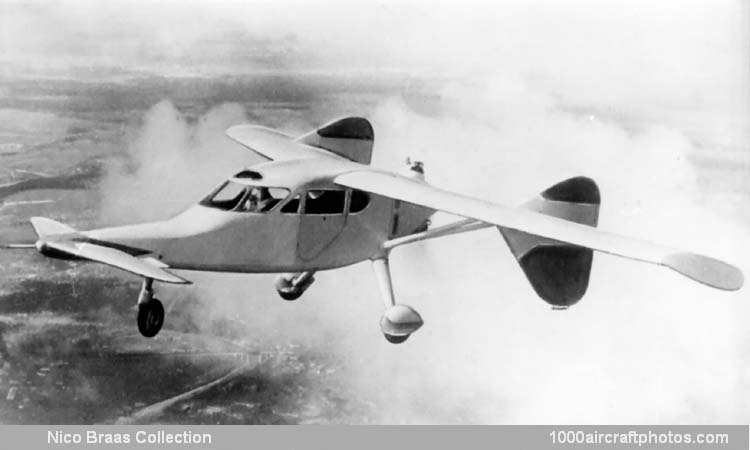The two spar strut-braced high wing had a Clark-YH airfoil, a constant chord, a 12% thickness/chord ratio, a sweep of 20°, and an anhedral of -2°. It was fitted with two triangular Scheibe fin/rudder surfaces, tested both at 55% span (pictured) and on wing tips, and it was tested with a wide variety of flap, slat and wing tip configurations. The extended nose carried the fixed tail plane with tabbed elevators. The tricycle landing gear was fixed, the main wheel spats were later removed and a new nose gear was fitted with same size as main units. The pilot was seated in the front of the three-seat cabin.
The airframe was of wooden construction, with wing and control surfaces covered with fabric. Power plant was an 110 hp (derated from 145 hp) M-11F five-cylinder air-cooled radial engine, driving a fixed-pitch wooden propeller of 7 ft 8.9 in (2,36 m), the cylinder-head helmets were soon removed. Two aluminum fuel tanks in inner wings held a total of 51.52 gal (195 l). The aircraft was first flown by A.N. Grinchik on November 19, 1945. Few problems were encountered, but there was much tinkering, eventually the under fins were enlarged and the slats removed. The aircraft showed outstanding stability and a refusal to spin. It was used as OKB hack for many years, its ultimate fate is unknown."
Span: 31 ft 2 in (9.50 m)
Length: 22 ft 11.6 in (7.00 m)
Wing area: 161.5 sq.ft (15.0 sq.m)
Weight empty: 1,415 lb (642 kg)
Loaded weight: 2,535 lb (1,150 kg)
Max speed: 127 mph (205 kmh)
Landing speed: 48 mph (77 kmh)
Range: 311 mls (500 km)
